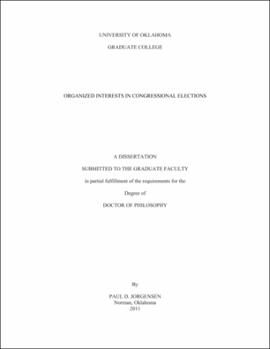| dc.description.abstract | Why do political action committees (PACs) donate money to some candidates and not others? Answers to this PAC-strategy question take two different forms. First, scholars emphasize demand-side variables of the legislative market (e.g., geographic location of PAC donors), culminating in the organizational presence model of PAC strategy, which discounts legislative strategies and finds that PACs donate to ideologically friendly, electorally vulnerable candidates who campaign where PACs have an organizational presence. Second, public choice scholars emphasize supply-side variables of the legislative market (e.g., congressional member attributes), culminating in the legislative asset model of PAC strategy, finding that PACs donate to the lowest cost congressional members in the best position to provide legislation, or a legislative strategy. Using data from the Center for Responsive Politics, I test each model using every PAC donation to a congressional candidate from 1990-2006, organized by the geographic location of PAC donor-bases and the PAC's policy sector. I find both models deficient in explaining PAC strategy. Only a small portion of PACs make decisions bounded by the geography of individual donors, making most PACs the nationalizing force many feared in the early 1980s. While PACs exhibit a clear strategy that seeks legislative benefit, the statistical significance of the legislative asset model comes from its ability to explain small donations with more accuracy than large PAC donations. In an attempt to reconcile these two approaches, I re-specify the legislative asset model with a conditional hypothesis: PACs donate money according to legislator characteristics and legislative strategies, but predominantly within the geography of its donor-base. This conditional hypothesis forms the foundation of a new mediated model, as the legislative strategy of PACs is mediated by the geographical distribution of its donor-base. This conditional hypothesis improves the explanatory power of PAC-strategy models marginally; however, the representational flaw in the PAC system still remains: PAC money creates financial constituencies that deviate from the geographic constituencies, exacerbating the differences between organized and unorganized interests in American political life. | |
